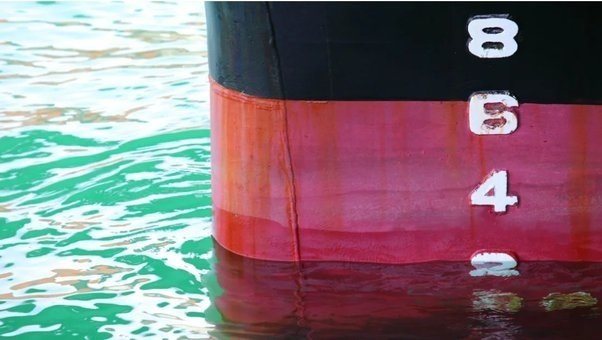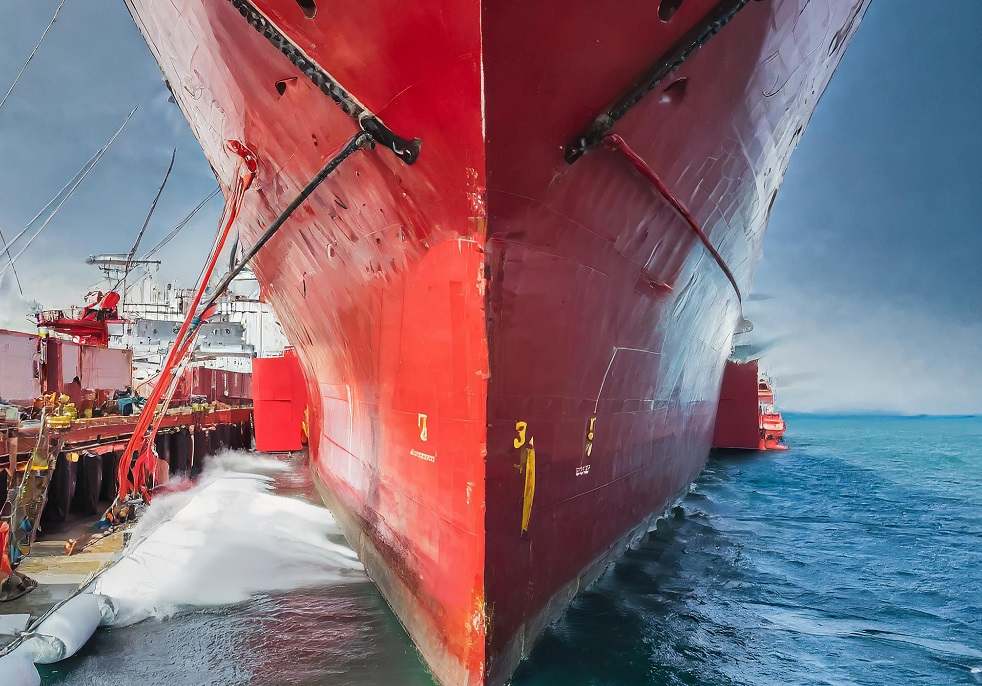As kids, we were very curious about these ships. I even once asked my uncle about the red colour of ships. “Oh, they give them this red colour to attract the attention of ships coming from afar so that they can see their ships.” Then I understood! But a few years ago, when the smartphone came in hand, a new door of knowledge opened, and then one day my uncle’s knowledge was proved wrong.
To know the secret of this red colour, we have to read some pages of the history of ships.
In the early days, most ships were made of wood. Wood being an organic material, the slow movement of the ship and the porosity of the wood made it an ideal breeding ground for underwater marine life—seaweed, algae, and insects.
An increase in marine life would increase the weight of the ship, put pressure on the engine, and consequently have a great effect on the speed of the ship.

Shipbuilding experts urgently need something that can withstand the enormous growth of marine life on the ocean floor. It was necessary to do something so that they would not have any adverse effect on the hull of the ships. In the early days, copper sheets were installed on the underwater sides of ships.
The main reason behind this is to prevent marine life, especially insects, from getting into the wood! But over time, research and improvements were made.
As a result of this, today a special paint is used in place of copper sheet, which is known as ‘antifouling paint‘. This paint works on the same principle as copper sheet, in which copper is used as the main ingredient.
Antifouling is the science of designing materials and coatings to counter the growth of marine organisms on any submerged surface. This color is also called copper oxide. Copper oxide has a reddish tint. This color is always given to the underwater part of ships. In the early days, mainly tri-butyl tin (TBT) was used.
But scientific studies have shown that TBT causes significant damage to the marine ecosystem. Therefore, shipbuilders these days mainly use self-polishing polymers, also known as self-eroding paints. It relies more on eco-friendly practices.
This paint is also made in such a way that, due to the movement of the ship, it gets torn continuously by the hammer of the water. Therefore, to prevent sea creatures from breeding on the surface of the ship, a new layer is applied each time they set out on a new voyage.
Nowadays, lethal ingredients can be mixed with any color. But only the colour red is given to maintain the maritime tradition. These different shades of red help observers measure the tonnage of the ship. The greater the weight of the ship, the deeper it is in the water. That is why such numbers are often seen written on the underside of the ship’s surface.
Why did Sam Asghari and Britney Spears broken up?
Sam Asghari and Britney Spears’ breakup happened just a few days ago but it gives…
WHY YOUR DOG BEHAVING ODD, HERE FACTS ABOUT DOG SMELLS
Pets are different from us. A dog’s smell might be unpleasant and make you uncomfortable….
Alerts before a long trip, 5 emergency situations for long viator
Many people travel by themselves by car or any other vehicle. Before a long-trip journey…
The Warmth and Beauty of Jaipuri Quilt (Jaipuri Rajai) in Winter Days
Welcome to the Pink City of Jaipur, where winter brings the pink chill and the…
19 Surprising Most Difficult Philosophical Questions to Answer
Sometime Philosophy is to answer the most difficult philosophical questions, and sometimes it is the…
how to be happy? 11 scientific tips !
We all know that the meaning of happiness can be different for different people, but…






